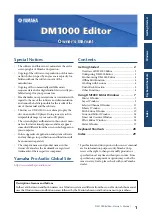
Chapter 1. What is Red Hat Network?
13
Systems subscribed to Workgroup may access the following features:
1. System Set Manager that allows administrators to perform an action on a selected set
of systems at the same time
2. Enhanced system details including the location of the system
3. System groups
4. User management
5. Grant or deny users access to selected system groups
6. Organization Administrators can modify the user details of all users within the orga-
nization
1.3. Automatic Notifications and Package Installation
You can configure Red Hat Network to send you email notifications of new and updated
software packages as soon as the packages are available through RHN. You can also config-
ure your systems to download and optionally install package updates automatically. Because
no user intervention is required, the benefits include:
•
Reduced time and effort required by system administrators to stay on top of the Red Hat
Errata list
•
Minimized security vulnerabilities in your network by providing the patches as soon as
Red Hat releases them
•
Filtered list of package updates (packages not relevant to your network are not included)
•
Reliable method of managing multiple systems with similar configurations
1.4. Security, Quality Assurance, and Red Hat Network
Red Hat Network provides significant benefits to your network including security and qual-
ity assurance. All transactions made between you and Red Hat Network are encrypted, and
all RPM packages are signed with Red Hat’s GNU Privacy Guard (GPG) signature to ensure
authenticity.
Red Hat Network incorporates the following security measures:
1. Your System Profile available at http://rhn.redhat.com is only accessible with an RHN
verified user name and password.
2. A Digital Certificate is written to the client system after registration and is used to au-
thenticate the system during each transaction between the client and Red Hat Network.
The file is only readable by the root user on the client system.
3. All notifications and information messages are signed by Red Hat with an electronic
signature using GPG. The
rpm
utility can be used to verify the authenticity of the pack-
age before it is installed.
4. All transactions are encrypted using a Secure Sockets Layer (SSL) connection.
5. All packages are tested and verified by the Red Hat Quality Assurance Team before
they are added to the Red Hat Errata list and Red Hat Network.
Summary of Contents for NETWORK WORKGROUP
Page 1: ...Red Hat Network Workgroup User Reference Guide 1 0 Red Hat Inc...
Page 2: ......
Page 4: ......
Page 26: ...26 Chapter 2 Red Hat Network Registration Client Figure 2 14 Text Mode Welcome Screen...
Page 32: ...32 Chapter 3 Red Hat Update Agent Configuration Tool...
Page 46: ...46 Chapter 4 Red Hat Update Agent...
Page 70: ...70 Chapter 5 Red Hat Network Workgroup...
Page 72: ...72 Chapter 6 Red Hat Network Daemon...
Page 74: ...74 Chapter 7 Using Red Hat Network with Red Hat Linux 6 2...
Page 80: ...80 Glossary...
Page 84: ......














































